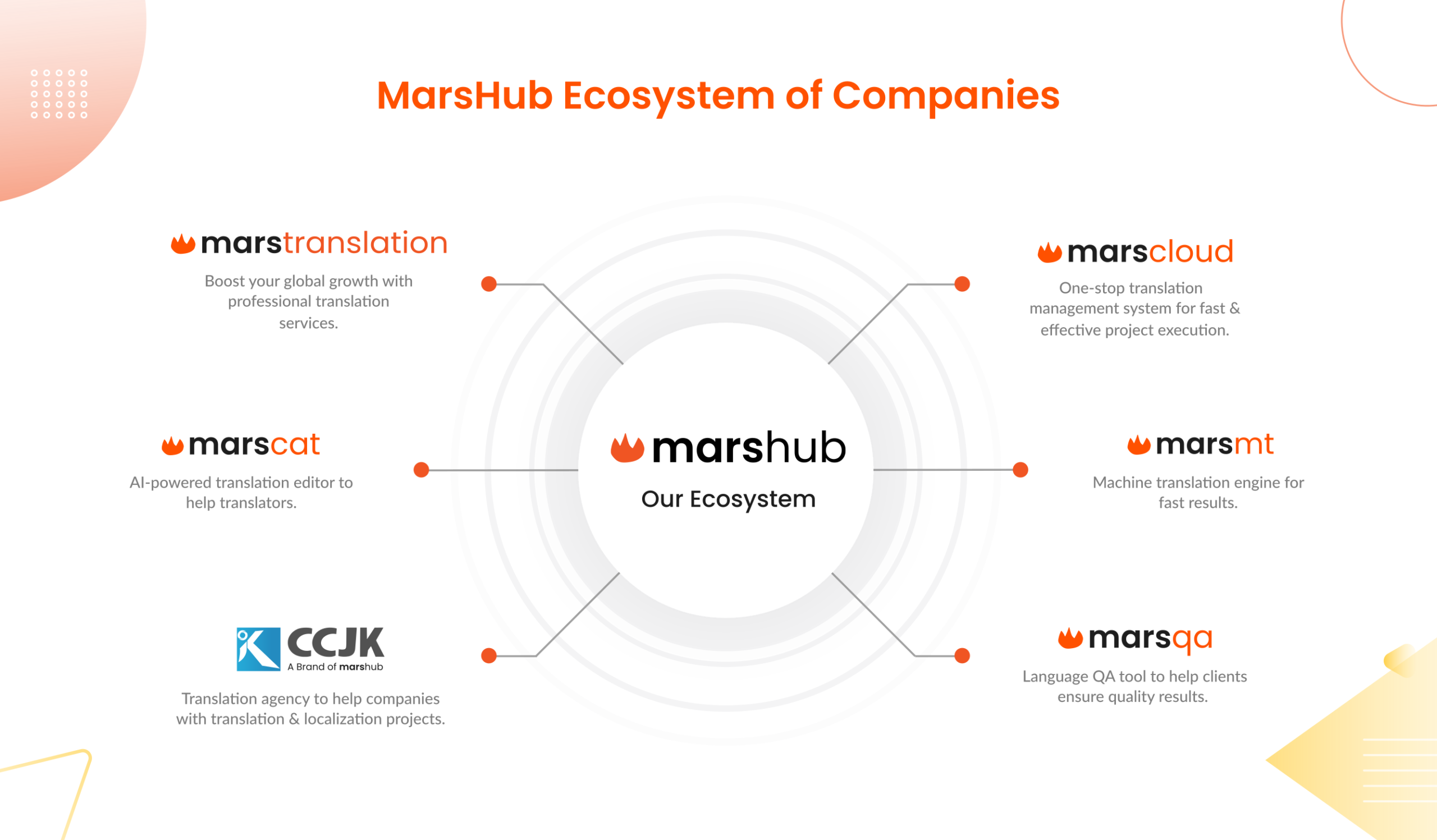Business localization for global markets comes up with enormous opportunities for companies, such as increased ROI and higher revenue. As your business grows, the demand for translated content and the localization process also increases. It can result in higher workloads and more time-consuming localization processes. Manual transitional translation management is not just time-consuming, but it is also very complicated and troublesome.
Business globalization has increased the demand for brand localization. The more your business grows, the more volumes of content you have to translate. For this purpose, you would need a professional translation management system with advanced translation tools. To keep up with this fast-paced business world, it is important to upgrade your localization process and optimize the workflow to achieve better results.
Whether you’re a well-known brand or a new startup, you must employ a reliable TMS to streamline your localization task. This article will talk about the significance of TMS, its benefits, and key tips to effectively use it.
Content
- What is a Translation Management System (TMS)?
- Significance of TMS Software
- Benefits of Translation Management System
- Must-Have Features of Translation Management System
- Final Verdict!
What is a Translation Management System (TMS)?
It is professional software that comprises advanced translation tools and quality assurance processes to generate high-quality translations for your localization projects. Based on your brand requirements and the targeted regions, you can translate your content into multiple languages. There are many translation systems that allow you to generate content in more than 200 languages. TMS uses advanced translation tools and quality assurance systems to generate high-quality translations.
Moreover, you can translate all sorts of digital assets through these systems. For example, TMS allows you to translate the content of websites, mobile apps, software, landing pages, advertisements, social media, articles, etc. TMS includes tools like translation memories and glossaries that allow them to recognize the cultural nuances of different regions and generate more culturally appropriate content.
Every TMS has its own unique features, so you have to be careful while choosing your ideal TMS. Make sure the TMS that you are choosing has all the required tools that would allow you to meet international criteria.
Significance of TMS Software
Many businesses still doubt the worth of TMS and rely on manual translation management procedures. Hesitation to change is the main reason why some brands don’t do well in the international market. No matter how successful your brand is in the local market, if you want to thrive in the global market, having a TMS is a must. This system saves your time and effort and makes the localization tasks hassle-free. For large-scale companies, managing massive amounts of translation is very complicated and results in errors and missed deadlines. Using TMS reduces all potential errors by automating your translation workflows and allows you to generate a large amount of content in just a few minutes.
Unlike the transitional manual process, file management is very easy and trouble-free because you have centralized data in one place. Some advanced TMSs are smart enough to generate human-like translations; you can hardly tell these translations are produced by a machine.
Although there are free translation tools available in the market, the translation they produce wouldn’t meet the international criteria. Make sure you are using professional translation software for translation management, it would enhance the credibility of your translations and allow your brand to excel in foreign markets.
Benefits of Translation Management System
If you are not sure whether you should buy a TMS or carry on with manual procedures then read these top benefits of TMS implementation for effective translation management.
1. Automated Workflows
One of the major issues with the traditional file management system is its slow and error-prone processes. The higher complexity of manual systems results in delays and poor file management. As you have to manage everything manually, it takes a lot of time to import and export content. Thanks to the agile processes of TMS, now you can complete your localization tasks within the expected time limit. Most TMSs offer support for all famous file formats. The best thing about these systems is that they require no human intervention to create translations. So, having a TMS would save you time by effectively streamlining the workflows and automating the localization processes.
2. Manage Volumes of Translations
Are you missing deadlines? Is your team having a hard time meeting the localization needs of your business? It happens when your business is in a growing phase. The demand for translation continuously increases which puts more burden on your shoulders to manage excessive translations. Hiring more labor would only complicate things, you need a reliable solution to eradicate this issue. In this case, TMS is the best solution to your localization problems.
It allows you to manage bulks of content in minutes, without any human intervention. This means you can invest your money in a professional TMS, rather than hiring more full-time human translators.
3. Quality Translations
Producing quality translation is the major concern of all global businesses. Most companies simply don’t go for TMS because they think machine translation is not as good as human translation. Well, it is true if you are using an open-source and unreliable TMS. Technology has developed so much, and there are plenty of AI-powered TMSs available in the market offering higher-quality translations.
These systems use advanced translation and quality assurance tools to generate in-context translations. TMSs use translation memories, style guides, and glossaries to generate the most relevant translation that resonates with your brand voice. It also allows you to create more culture-friendly content without losing the intent of the original text.
Unlike human translations, the translation generated by this software is mostly error-free, so you don’t have to spend time editing, proofreading, and reviewing the content. Such TMSs can easily manage content that doesn’t need much creativity, although there are systems available that even provide support to produce creative transcreations.
4. Advanced Security Measures
While doing the localization, the security of your data and information that you insert in the cloud-based TMS is the most important concern. Businesses have to translate legal documents and confidential information using these systems, so it is critical to ensure that their data will remain protected. TMSs employ advanced security measures to keep the information private.
If you are working with a cloud-based system, ensuring the privacy of all documents is imperative. TMS allows you to control access to different segments and documents. This means you choose who will have access to specific data and whose access you want to restrict to ensure privacy.
First of all, you have to limit the access to translated documents to only those who actually need to review, proofread, or finalize the data. In the case of legal business documents, you have to be extra careful, and accessibility to these files must be provided to authorized members only. Make sure the TMS that you are choosing for your translation management employs advanced security measures to protect your data from cybercriminals and malicious hackers.
5. Centralized Data
The good thing about having a cloud-based TMS is that all of your data is centralized in one place. There will be no issues related to duplicate data and information redundancy. In manual file management, sometimes new translations overlap with older ones, resulting in duplicate translations. There are chances that your two employees are working on different versions of a file because of communication gaps.
Luckily, in the case of TMS, you will not be wasting your time and resources on duplicate data. First of all, as you have centralized information, all of your translators have access to the same version of documents. Moreover, if duplication happens, your TMS has advanced tools to detect data redundancy, and it keeps deleting unwanted clutter. There will be no unnecessary data that saves up a lot of storage space.
6. Support Human Translators
Having a TMS for localization doesn’t mean you don’t need any human translators. The purpose of TMSs is not to replace human or project managers. Instead, they are meant to support your translation management and team to achieve your localization goals effectively.
It’ll reduce excessive translation load from your team members, and allow them to be more productive. It also makes the translation processes hassle-free for project managers, and you can smartly manage the localization tasks. Because it allows you to streamline all translation tasks into a single system. Every team member, including managers, can easily control all operations. Moreover, everyone gets notifications whenever there is an update on the documents, so project managers don’t have to send separate emails to all team members.
7. Easy Scalability
TMS allows project managers to easily allocate resources, whenever needed, for a translation management task. When all translation and business processes are well-organized, that makes it easier for managers to trace all potential issues and resolve them. They reduce the chaos and are also less time-consuming as compared to the processes that you have to manage on separate systems. Without doing much hard work, managers know exactly where every piece of content is. This way, they can manage the progress of multiple translation projects simultaneously.
Moreover, it also provides regular progress reports on your localization project. All team members know exactly where the project is standing and what improvements you need to achieve desired results. Project managers can easily monitor the project’s progress in real time. This system allows them to do trouble-free cost tracking, invoicing, and billing, so they can release payments to all stakeholders just in a few clicks.
8. Save Time and Money
Any business that wants to be successful in foreign markets must respond quickly to all changing trends, opportunities, and market localization needs. The agile workflows of TMS allow you to cope with the market demands and manage large volumes of translations. The automation of the localization process saves a lot of time. Unlike manual file management, there is almost no human intervention which makes the translation process less complicated and smooth.
Managing a budget is the most critical thing in your localization project. Transitional translation management was more costly as compared to TMSs. Although you have to pay every month to your TMS providers; at the end of the day, it saves you a lot of money. Firstly, it reduces your need for in-house full-time translators, as most of the translations are now managed by TMS. Moreover, more content is managed in less time which helps you better deal with increasing business expansion needs in a more cost-effective way.
9. Reduce Communication Gaps
Poor communication is one of the main reasons why most localization projects fail to achieve desired results. The efficiency of your translation management project highly depends on the overall teamwork and how well the translation team collaborates with each other. The centralization of data in TMS allows all team members to have easy access to all translated documents. There is only one version of all translated documents available, so the issue of information duplication is also reduced.
There is no need to send emails to other team members whenever an update happens, or you need some edits. Everything is transparent and available in real-time which enhances team cooperation and creates an environment where all team members can work with higher productivity. Having a professional translation system means you would not have communication gaps between team members.
10. Easy Portability
It is recommended to go for a cloud-based TMS for many reasons. First of all, these TMSs would give you easy accessibility to all the data and files. No matter what devices your employees are using, and from where they are working, they can always access the TMS and communicate with other team members in real-time.
For example, many global companies have employees from around the world, they hire native-speaking employees at remote locations. In this scenario, if you have employees working at remote locations, TMS is the best option for you. It not only promotes effective communication but also makes it easier for your clients to work on the same project at distant locations. Moreover, there is no need for physical drives to save your data as everything is being stored on the cloud. It further improves the efficiency and speed of your translation processes.
Must-Have Features of Translation Management System
1. Numerous Language Pairs
Your TMS must be compatible with multiple language pairs. While choosing your TMS, you must make sure that it supports plentiful language pairs to help you in content translation for various regions. A pair of languages are the languages you need to translate to and from. For this, you should know in which languages you want to translate your content from or to. So, your TMS must have compatibility with the languages that you want to pair.
2. Automatic File Formatting
As you’re choosing a TMS for effective translation file management, it is important for you to make sure that it supports automated file formatting. If you have these features in your TMS, it will save a lot of time by automatically encoding the file front properties, spacing, and image placement. Otherwise, it will take you hours to do the formatting of each file manually.
3. Translation Memory
To generate high-quality and in-context translations, it is significant to have this feature included in your TMS. Translation memory is a database tool that stores all the previously done files and uses them to create a new translation. It gets guidelines from formerly approved translation files and helps you generate in-context translations that are more relevant to your brand.
This tool also allows you to have a consistent brand voice across various regions. Having this tool, your TMS will get wiser over time, and it will start understanding the terminologies that you keep using in your translations.
4. Quality Assurance System
It is important to inquire with your TMS provider about which quality assurance processes they use to ensure high-quality translations. Every TMS has its own way of ensuring the quality of translation, and for this, they have some tools and features included. The quality assurance software included in your TMS would have a huge impact on the overall content quality.
If you want TMS for creative content then you must buy software with an advanced quality assurance system. Therefore, you must choose it wisely considering your content needs.
5. Advanced Security
Every business cares about their data security and the confidentiality of their private information. As cybercrime and hacking are increasing continuously, it is important for companies to beware of data breaches and adopt effective security measures to protect their precious data. Your TMS should meet higher security standards to provide you with the security you actually want.
For this, you should look for SSL certification, encrypted file storage, two-step authentication, and PCI-compliant payment. Having these features in your TMS would provide you with good security and protect your data from all sorts of potential damages.
6. Live Human-Support
Translation teams and project managers can have technical issues in TMS. It is also possible that some team members are not able to use some features. For this, having live human support would be a great help for your team. Whenever your team has any issue, they can directly contact the technical team of the TMS provider and get their issues resolved in no time. There are many TMS providers offering technical support that can save you from a lot of hassle.
7. Progress Reports
To get a clear idea about the progress of your localization project, you should choose a TMS system that offers regular progress reports. It allows you to monitor the performance of all translation team members and detect all potential issues on time. You can easily keep track of all localization activities and make important improvements.
Final Verdict!
If you’re a business aiming to enter a new foreign marketplace, then you must not ignore the importance of localization. Translating your content to the native languages of potential customers is significant for your global brand expansion. Having professional TMS software would support you in achieving your localization goals without spending a lot of time, effort, and money. Advanced TMS allows you to generate high volumes of translations in the fastest turnaround time without compromising the quality.



